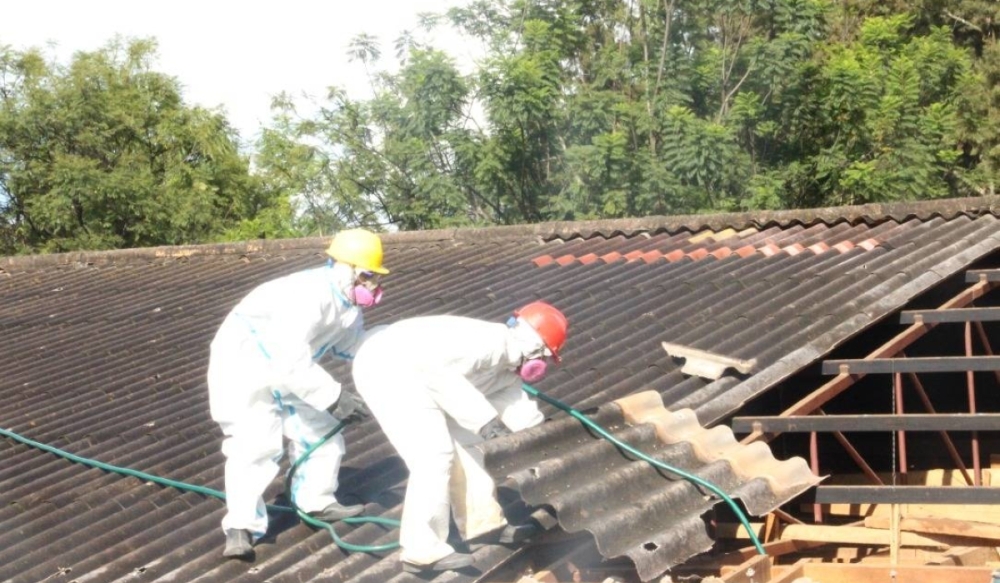

Burial is the best way asbestos roofs are disposed off after being removed from buildings to prevent any health risks, according to Mathias Ntakirutimana, the coordinator of the asbestos removal project at Rwanda Housing Authority.
According to Rwanda Housing Authority, 1.4 million square meters out of about 1.7 million square meters have been removed from buildings across the country.
Ntakirutimana told The New Times that: "Asbestos is buried in specially prepared sites which are located far from wetlands, residential areas, protected ecosystems, and biodiversity-sensitive zones.
"These sites are on government land and do not interfere with private properties.”
He explained that those burial sites are fenced and monitored.
The asbestos is buried in holes approximately six meters deep. After burial, he said, the sites are covered with soil and, on top, trees and grass are planted to prevent any future risk.
"There are 13 operational asbestos burial sites across Rwanda. In Southern Province there are four; in Huye, Gisagara, Nyanza, and Kamonyi districts. Rusizi, Ngororero, Karongi, and Rubavu districts in Western Province, and Musanze, Gicumbi, and Rulindo districts in Northern Province. And Rwamagana and Nyagatare districts in Eastern province.”
Ntakirutimana noted that, "Kigali does not have a burial site due to its population density.
Asbestos from Nyarugenge is taken to Kamonyi District, while asbestos from Gasabo and Kicukiro districts is taken to a site in Rwamagana District.
Asbestos is dangerous and the primary health risk comes from asbestos fibers, particularly when they become airborne and are inhaled. The fibers can cause serious respiratory diseases such as lung cancer, mesothelioma, cancer of the larynx and ovary, and asbestosis (fibrosis of the lungs).
According to a 2004 World Health Organization publication, around 125 million people worldwide are at risk from asbestos exposure. In the same year, asbestos-related lung cancer, mesothelioma and asbestosis from occupational exposures resulted in 107,000 deaths and 1,5 million disability adjusted life years (DALYs).
Developed in the 1990s as a way of comparing the overall health and life expectancy of different countries, DALYs are a measure of overall disease burden, expressed as the number of years lost due to ill-health, disability, or early death.
Ntakirutimana told The New Times that: "Asbestos is handled and disposed off in a manner that minimises health risks not only to the population and the environment but also to the workers.
"During removal, workers wear protective gear to prevent any physical contact with asbestos fibers. Workers' protective clothing, used during asbestos removal, is also buried to prevent contamination.”
He explained that, before and during the removal, the asbestos is wetted to minimize dust formation and airborne fibers.
"Then, the removed asbestos is then packaged in sealed sheets and transported in trucks with closed compartments to prevent contamination during transit.
"The trucks used for transporting asbestos are thoroughly washed at the disposal site to ensure no residual asbestos dust remains.”


